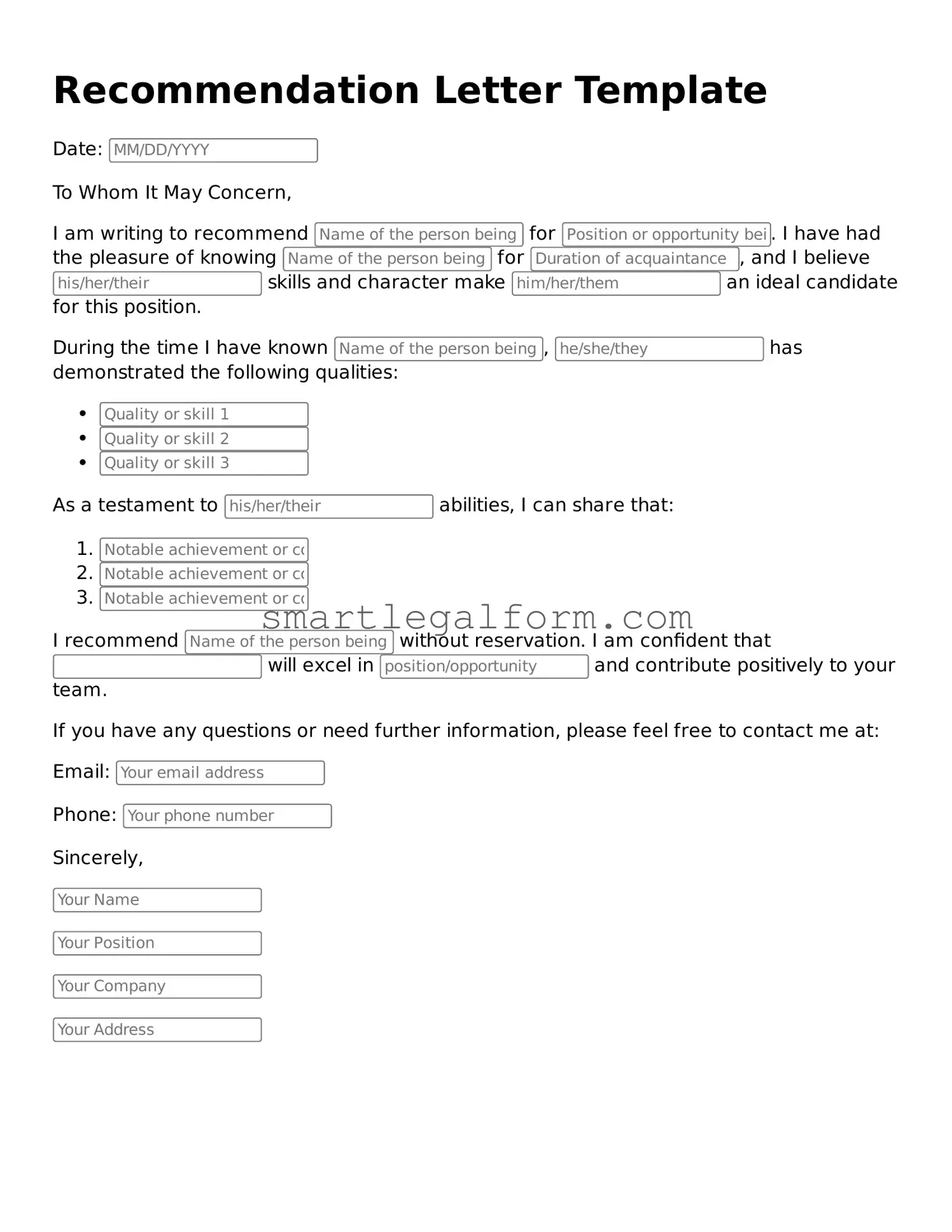Attorney-Approved Recommendation Letter Form
A Recommendation Letter form is a document used to request a letter of support from someone who can vouch for your skills, character, or achievements. This form helps streamline the process, ensuring all necessary information is collected efficiently. To get started, fill out the form by clicking the button below.
Fill Out Your Form Online
